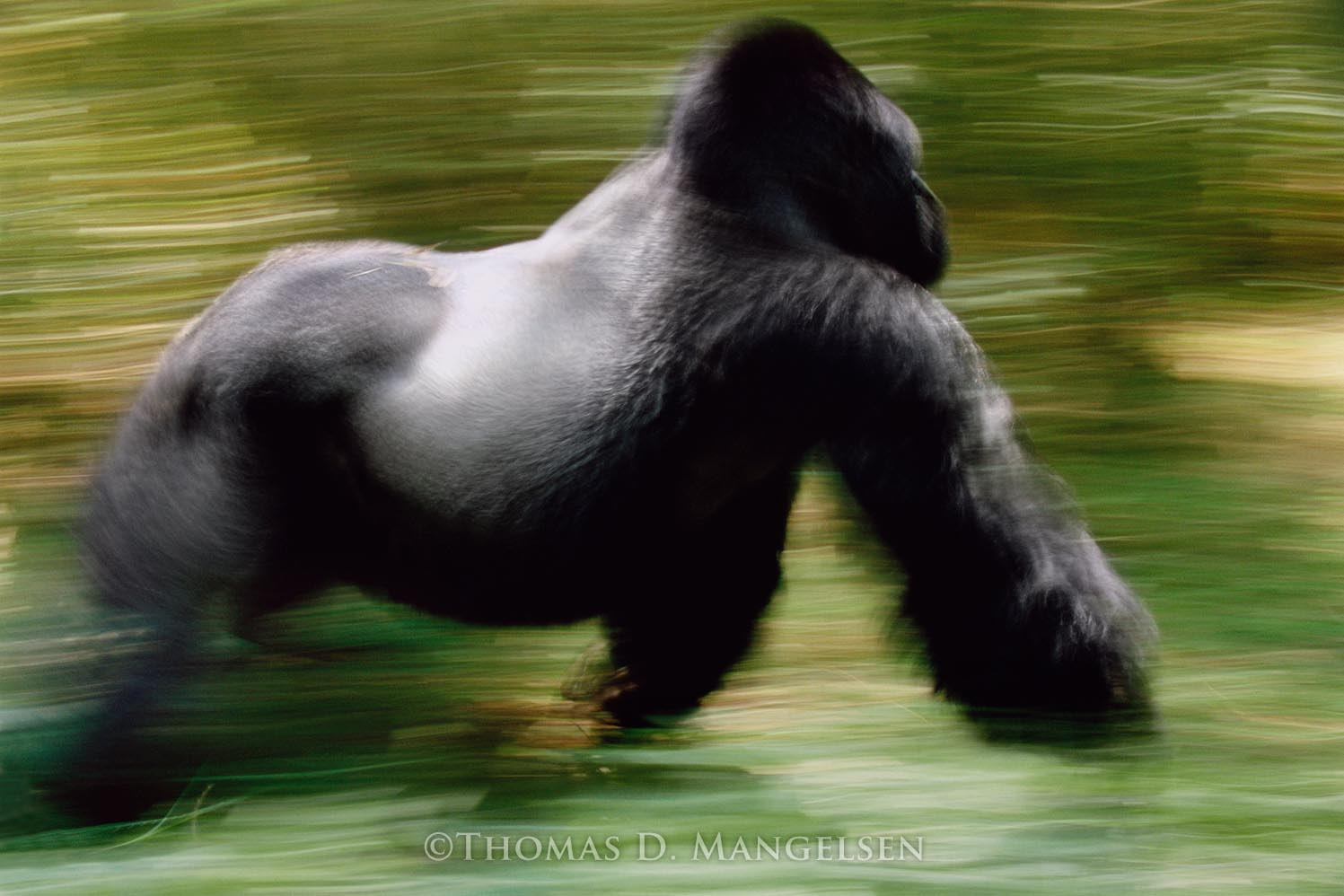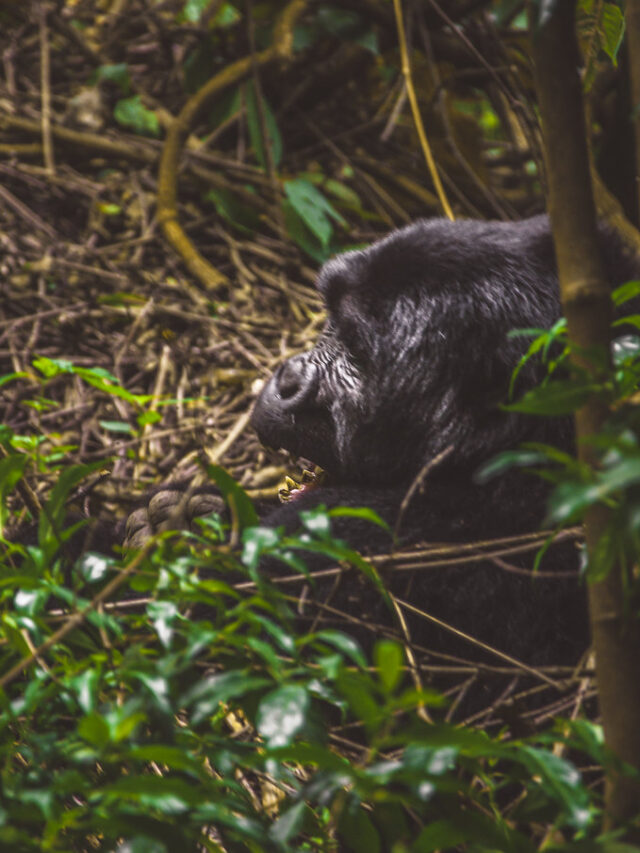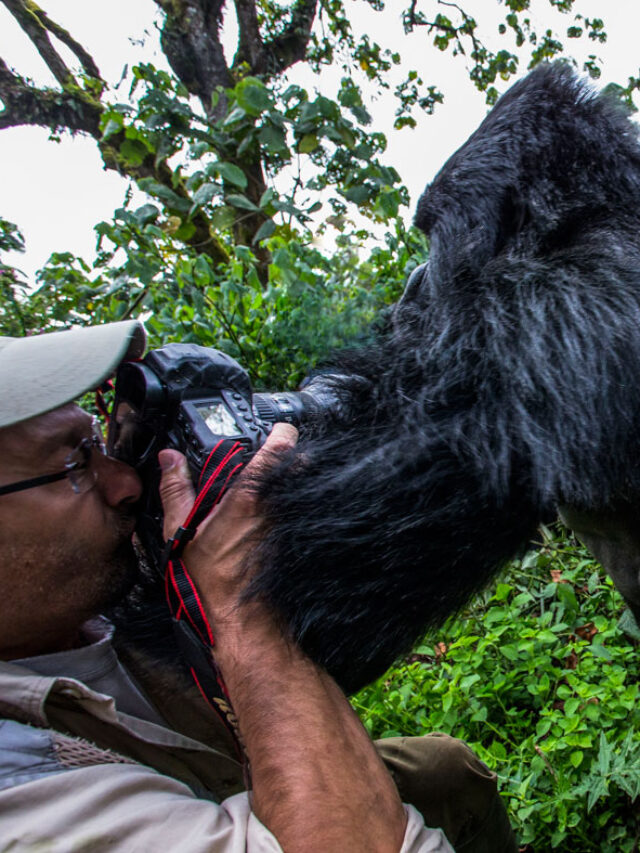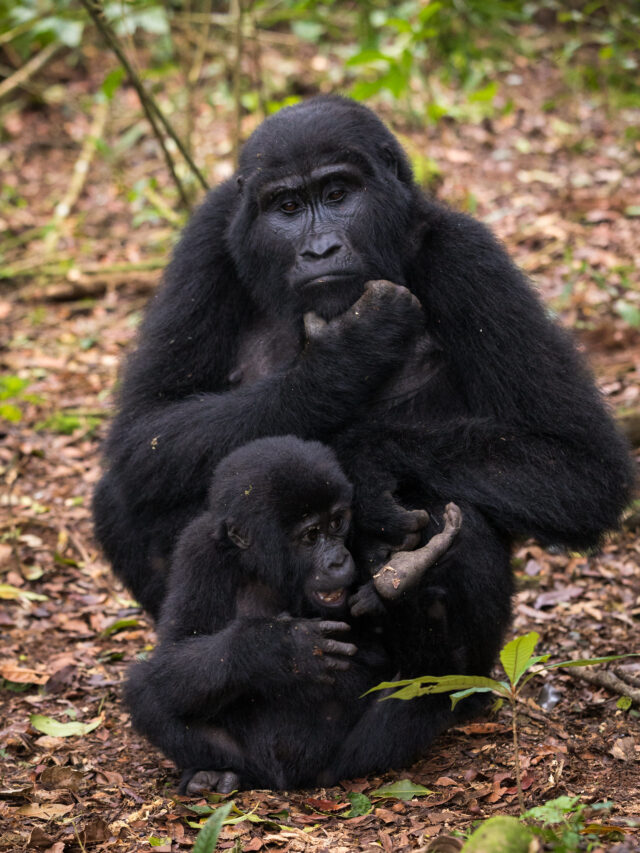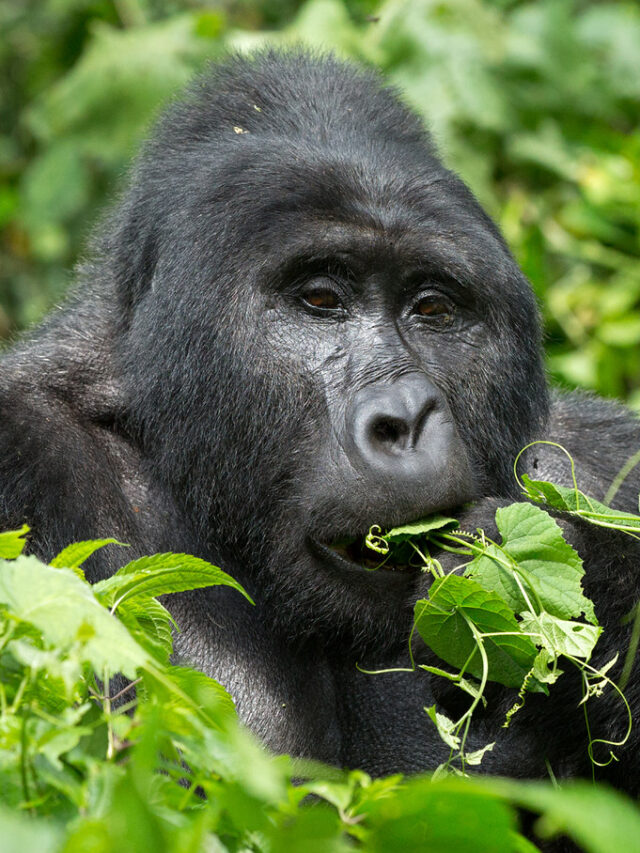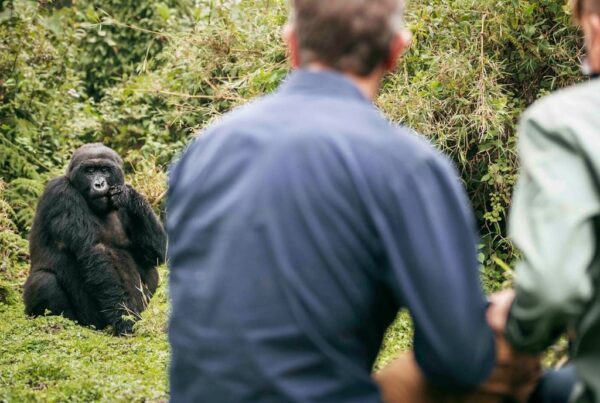What To Do When a Mountain Gorilla Charges Toward You: A Guide to Staying Safe in the Wild
Understanding the Heart-Pounding Moment in Gorilla Territory
It’s the stuff of wildlife documentaries — a sudden rustle in the thick foliage, the deep chest-beating of a silverback, and then… a charge. For many travelers trekking deep into the misty forests of Uganda, Rwanda, or the DRC, encountering a mountain gorilla is the highlight of their African adventure. But what happens when that rare and beautiful moment turns intense? What if a mountain gorilla charges toward you? Should you run? Scream? Freeze? Or bow down?
What To Do When a Mountain Gorilla Charges Toward You — The truth is, gorilla charges are part of their natural behavior, especially among dominant silverbacks protecting their families. Though these charges may seem terrifying, they are almost always bluff displays rather than real threats. Still, knowing exactly what to do can be the difference between a safe encounter and a dangerous misunderstanding — not just for your safety, but for the gorillas’ well-being too.
Let’s take a deep dive into what really happens during a gorilla charge, why they do it, and how to react in the calmest, safest, and most respectful way possible.
Why Do Mountain Gorillas Charge? It’s Not About Violence — It’s About Authority
Mountain gorillas are incredibly intelligent, social animals with a strong sense of hierarchy and territoriality. Silverbacks — the dominant males in the group — are especially protective of their troop, which can include several females and their young. When humans approach too closely, move too quickly, make loud noises, or behave unpredictably, the silverback may perceive a threat. And like any protective leader, he may respond — not out of aggression, but out of instinct and responsibility.
Charges can be real or bluff. A bluff charge is meant to intimidate, assert dominance, and warn — not attack. In most gorilla trekking experiences, if a silverback charges, it will stop short of making physical contact. The sound and sight are overwhelming — thudding feet, deep grunts, and powerful chest beats — but it’s his way of saying, “This is my family. Respect our space.”
What Exactly Happens During a Gorilla Charge?
A gorilla charge often begins with vocalizations — loud grunts or growls that rise in intensity. Then, the silverback may beat his chest with cupped hands, stand tall, and begin moving rapidly toward you. The charge might be direct or may come from the side — crashing through vegetation with incredible speed. Sometimes, the silverback stops just feet away, snarling or huffing, then retreats. Other times, he might circle or stand his ground, watching your reaction.
This experience is deeply primal. You feel the forest tighten, the air shift. But what’s most important is not to panic — because your response sets the tone for the outcome.
What You Should Do When a Mountain Gorilla Charges
If you ever find yourself face to face with a charging mountain gorilla, follow these critically important steps. They’ve been developed over decades by researchers, trackers, and park rangers who understand gorilla behavior deeply:
1. Stay Calm and Do Not Run
No matter how instinctively your body wants to flee, running is the worst possible reaction. It triggers the gorilla’s chase instinct and escalates the perceived threat. Mountain gorillas are incredibly fast — much faster than humans — and fleeing may cause a bluff charge to turn more serious. Ground yourself mentally and stay rooted.
2. Lower Yourself Slowly
As soon as you sense a charge or if the gorilla starts displaying aggressively, begin to lower your body into a submissive crouch or kneeling position. Avoid sudden movements. The goal is to appear non-threatening and submissive. By lowering your height, you’re showing the silverback that you are not challenging his dominance or posing any danger.
3. Avoid Eye Contact
In gorilla social behavior, a direct stare can be perceived as a challenge or threat. During a charge, avert your eyes slightly and keep your head down without turning your back. Staring directly at the gorilla may escalate the encounter. Look to the side and remain still.
4. Remain Silent
Avoid talking, yelling, or even gasping loudly. Loud noises can intensify the gorilla’s stress. Stay as silent as possible. Even the clicking of cameras or accidental laughter can provoke a silverback when he’s in protective mode.
5. Follow the Ranger’s Lead
Every trek into gorilla territory is accompanied by experienced UWA (Uganda Wildlife Authority), RDB (Rwanda Development Board), or Virunga NP guides. These rangers are trained in gorilla behavior and act as mediators between humans and the troop. If a charge occurs, they may make deep grunting sounds — mimicking submissive vocalizations — to calm the gorilla. Always follow their instructions. If they signal you to freeze, crouch, or move slowly away, do exactly as they say.
How Common Are Gorilla Charges, Really?
While it’s possible, especially when visiting families with dominant or newly appointed silverbacks, charges are not a daily event. Most treks are peaceful, emotionally stirring encounters where gorillas continue their daily lives mere meters from guests. But because these are wild animals — with emotions, instincts, and social bonds — they can react if they sense a boundary has been crossed. Experienced guides often read signs early and will adjust your distance if the troop seems agitated.
Charges are more common when visitors make sudden movements, come too close, or ignore the 7-meter rule. In some cases, a silverback may charge just to reassert control after a conflict within the troop — not because of you at all. Understanding the context is key, and staying composed is everything.
What NOT To Do During a Charge — Mistakes That Could Escalate the Situation
Never scream, raise your arms, or make abrupt gestures. Never run. Never stand tall or try to “hold your ground” in defiance — this is not a confrontation you’ll win, nor is it one you should provoke. And never try to touch a gorilla, even if they come close after the charge. Respect their space completely.
Also avoid using flash photography or excessive camera clicking. While gorillas have grown habituated to human presence, they still react strongly to certain unfamiliar behaviors or equipment.
Post-Charge Behavior: What Happens Next?
Most of the time, a bluff charge ends with the silverback turning his back on you, sitting down, or returning to his troop. That’s your cue to stay still, breathe, and wait for the guide’s instructions. Often, the family will resume their foraging or resting activities. It may take a few minutes for the tension to settle, but things usually return to normal quickly.
In fact, many trekkers who experience a charge say that the emotional depth of that moment — feeling the force and authority of the forest’s ruler — becomes the highlight of their journey. It’s not about fear. It’s about respect, humility, and awe.

